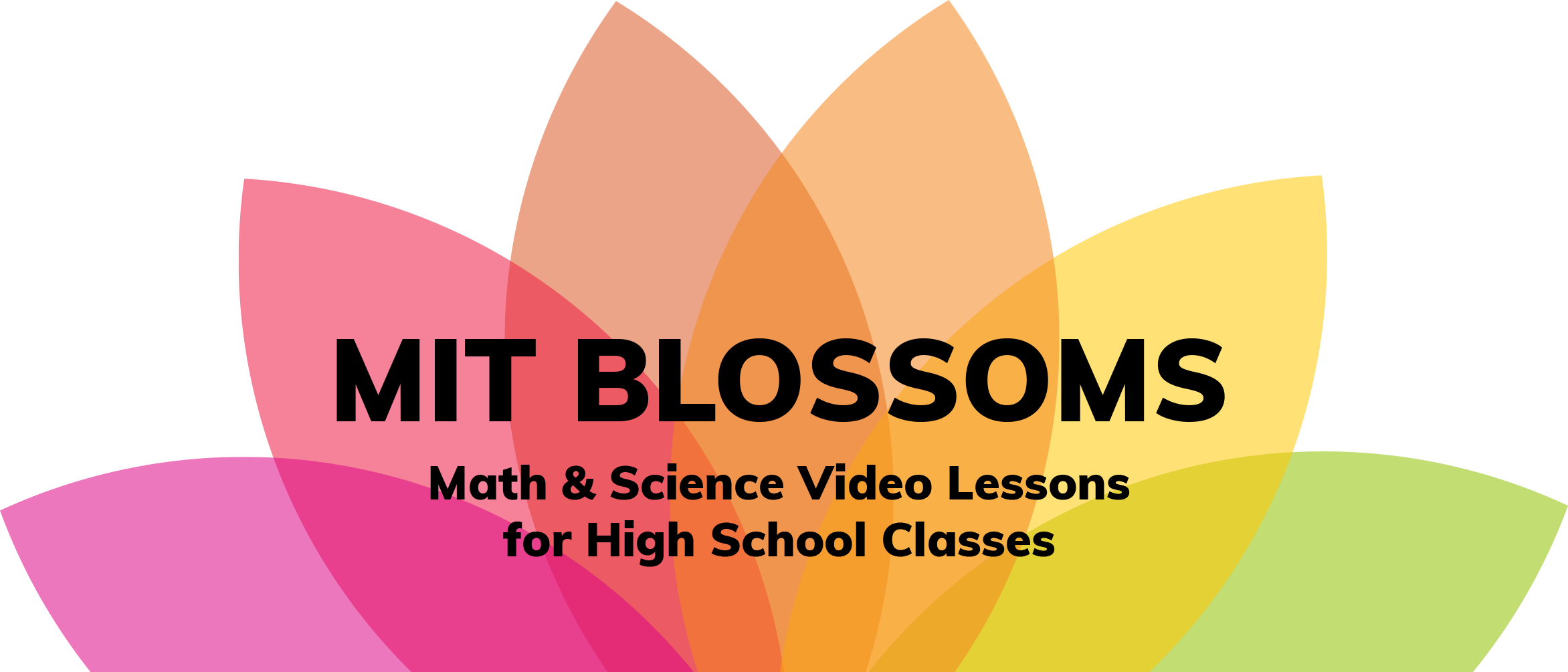Blended Learning with BLOSSOMS

In the past couple of weeks, we have discussed the possibilities and potential of integrating our classes. It seems that with blended learning, technology can give students more accessibility to individualized instruction. As a teacher, it seems like a great idea to be able to cater to the education needs of every single student. However, at MIT, the possibilities of blended learning are not only being developed in the classroom or even school-wide level but at the international level.
These possibilities are taking on the form of an initiative called BLOSSOMS (Blended Learning Open Source Science or Math Studies Initiative), a cross-border, collaborative learning and teaching system. The system is designed for high school math and science contents by creating short videos that can be used as support by teachers. However, two key components make this intuitive truly unique.

First, the initiative is an international one. It aims to make content accessible to students in schools worldwide. The videos that are offered are actually created by teachers and professors from around the world. Because of the collaboration of teachers worldwide, videos are translated and available in a variety of languages apart from the native one that they are made in. When looking at the website myself, videos were available in Arabic, English, Farsi, Hindi, Japanese, Kannada, Korean, Malay, Mandarin, Portuguese, Spanish, and Urdu. Personally, I think that apart from access to the content itself, students would be able to see instructors of other backgrounds. Also if there are students who speak any of these languages at home, they can watch the videos in there home language and even share it with their families.


Second, the initiative aims to provide services to high-poverty locations through the use of a lower-tech delivery platform. If a site does not have access to internet services, the videos can also be provided through CDs, DVDs, and videotapes. Developers of the Blossom program are working to partner with universities and Ministries of Education in different countries that can be the centers of support and distribution for school sites.
Although I did look at the website and was able to look through the videos that are available, I am interested in getting more information about how the program is actually doing in other countries since the article itself was written over a decade ago. Even if the videos are specific to math and science classes, I think that a multinational blended learning program with collaborating teachers and resources is a great idea. With Spanish, I think it could be possible to get instructors from the 20+ countries to collaboratively create content that we could all use. This would give our students a first-hand experience into the different types of Spanish that exist.
Article: Larson, R. C., & Murray, M. E. (2008). Open educational resources for blended learning in high schools: Overcoming impediments in developing countries. Journal of Asynchronous Learning Networks, 12(1), 85-103.
This is impressive--a multinational blended learning program! Thank you for sharing this. Do you know if this approach has been taken with other content areas aside from STEM? I hope so. This seems to be a highly valuable resource as not only does it allow for individualized learning, but it will enable learners to have greater access to the global community. Great post!
ReplyDeleteThank you very much for sharing this, Angelica. I am always in awe of the open source work that MIT does, and I shouldn't be surprised they are involved with blended learning. I think I will refer to this initiative during my teaching. I wonder what plans they have to extending this to other content areas?
ReplyDeleteYou made an excellent point aboout the multiple languages! I think you're right that ELLs can make use of BLOSSOMS to understand the content in their home language. Teachers can problably also use the videos to provide bilingual resources for their students.
Hello!
ReplyDeleteThank you for sharing this, it as very interesting. I too believe that even as a teacher that taught solely online or incorporated blended learning in their schools that they should still come from a diverse background. It is interesting to see that this content could be taught in many different languages benefiting the family and students.
Hello Angelica,
ReplyDeleteI am very grateful for your blog post because I have never heard of BLOSSOM before. I am a prospective math teacher and MIT's idea of blended learning to reach out internationally is exceptional! I will definitely look into BLOSSOMS to guide my students, especially my English learners in my classroom next year. Thank you for your blog post! It was very informative!
Hi Angelica, thank you for this post. This really opened my eyes to seeing how not providing blended learning in a language that our students come with, can put them at a disadvantage. I think that by having these different videos in different languages, it would make the transition for a student who just came from another country--which is very common here--a lot smoother and welcoming.
ReplyDelete